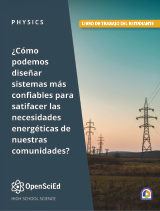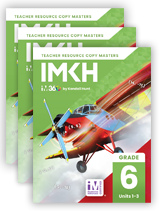Search Listing Name
RESULTS: 1781

product:
OpenSciEd Physics + Earth & Space Unit 1: Energy Flow from Earth's Systems Spanish Student Workbook
OpenSciEd High School addresses all high school NGSS standard

product:
IM v.360: Grade 6 Teacher Resource Copy Masters Set
IM® v.360 6-8 Math is an IM Certified curriculum providing trusted, highly rated materials to ensure students thrive in mathematics. Each Illustrative Mathematics lesson has four phases, from pre-unit practice modules to cool downs, focusing students’ attention on definitions, notations, and graphical conventions contributing to the development of real numbers.
product:
OpenSciEd Unit 7.3: Metabolic Reactions Teacher Edition
OpenSciEd Middle School science program addresses all middle school NGSS standards. This comprehensive science curriculum empowers students to question, design, investigate, and solve the world around them.
- Phenomenon Based - Centered around exploring phenomena or solving problems
- Driven by Student Questions - Storyline based on students’ questions and ideas
- Grounded in Evidence - Incremental building and revision of ideas based on evidence
- Collaborative - class and teacher figure


